Background
Commodore Force was created when Zzap! 64 was re-launched with a new name and design. The name change was not only in line with the then current Europress Impact titles, Sega Force , N-Force, Amiga Force , but served to distance the magazine from the old Zzap! 64 style.
The editorial team included Steve Shields (managing editor), Phil King (deputy editor), Chris Hayward, Ian Osborne and James Price, all staff writers. Issue 1 had the cover date of January 1993. Regular editorial content included What's Happening (news), Reel Action (2x cover tapes), Lloyd Mangram's Mail Bag (letters), The Tipster, Public Sector (PD column), Bash Yer Brains (Adventure section) and The Mighty Brian (a technical section). First Samurai received the first new Commodore Force "Hurricane Hit" accolade with a 97% overall rating.
By issue 2 Phil King had gone, his vacant Deputy Editor position filled by Ian Osborne. Miles Guttery joined as staff writer to replace James Price who had also left.
In issue 4, publishers Europress Impact changed their name to Impact Magazines. Controversy ensued as Emlyn Hughes International Soccer was released on budget and harshly reviewed by Chris Hayward and Miles Guttery, who gave ratings of 46% and 70%. Countless Emlyn Hughes International Soccer fans bombarded the magazine with complaints. The magazine later retracted the rating in a games round up in issue 10 and awarded it a middle-of-the-road 75%.
With issue 10 Zzap! 64, or Commodore Force (incorporating Zzap! 64), reached 100 issues. A pull-out Zzap!64 100th issue special featured all the gold medal games in the magazine's history. Steve Shields had left, to go to Sega Force Mega / Sega Master Force, leaving the Editor's position to James Price, who had previously returned in issue 6. Ian Osborne had also left, going over to Amiga Force.
In Issue 11 and Commodore Force listed its Top 100 Commodore 64 games of all time. Top three games listed included Head over Heels , runner up Laser Squad and top spot goes to Frankie Goes To Hollywood . Chris Hayward also departed during this time.
A triple whammy of Hurricanes were reviewed in issue 12. The long-awaited Mayhem In Monsterland and Lemmings both received an overall rating of 97%, while Alien 3 was awarded 93%.
The readers got their chance to have a top 100 Commodore 64 game of all-time list. Creatures came out on top, followed by The Blues Brothers, Creatures 2 , Turrican 2 and Bubble Bobble .
A readers awards of 1993 is listed in issue 15. Main awards included Beat ‘em up for Barbarian 2 , best sport game was Emlyn Hughes International Soccer. The Blues Brothers won best movie tie-in, while the main best game overall went to Mayhem In Monsterland .
Issue 16’s next-month page announced that the next issue would feature the CF team's favourite game. "Issue 17 – on sale, March 10", though it never did go on sale due to Impact Magazines closing down. Issue 16 also contained no new game reviews, with much space taken up by reprinting old cheats and tips.

Rick Dangerous is a platform game developed by Core Design for the Acorn Archimedes, Amiga, Atari ST, Amstrad CPC, ZX Spectrum, Commodore 64, and MS-DOS. The game was released in 1989 and published by MicroProse on the Firebird Software label in the UK, and on the MicroPlay label in America. It was also published in Spain by Erbe Software. Later, it was released with two other games, Stunt Car Racer and MicroProse Soccer, on the Commodore 64 Powerplay 64 cartridge. The game was followed by a sequel, Rick Dangerous 2, in 1990. Loosely based on the Indiana Jones film franchise, the game received mixed reviews from critics.
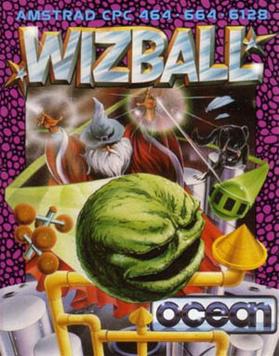
Wizball is a horizontally scrolling shooter written by Jon Hare and Chris Yates and released in 1987 for the Commodore 64 and later in the year for the ZX Spectrum and Amstrad CPC. Versions for the Amiga and Atari ST were released in the following year. Wizball was also ported to IBM PC compatibles and the Thomson MO5.
Newsfield Publications Ltd was a British magazine publisher during the 1980s and early 1990s.

Zzap!64 was a computer games magazine covering games on the Commodore International series of computers, especially the Commodore 64 (C64). It was published in the UK by Newsfield Publications Ltd and later by Europress Impact.
1989 saw many sequels and prequels in video games, such as Phantasy Star II, Super Mario Land, Super Monaco GP, along with new titles such as Big Run, Bonk's Adventure, Final Fight, Golden Axe, Strider, Hard Drivin' and Teenage Mutant Ninja Turtles. The year also saw the release of the Sega Genesis and TurboGrafx-16 in North America, and the Game Boy worldwide along with Tetris and Super Mario Land.

Emlyn Hughes International Soccer (EHIS) is a soccer computer game first released in 1988 by Audiogenic Software Ltd. The game is named after the popular English footballer Emlyn Hughes. It initially appeared on the Commodore 64, with other versions produced for the Amstrad CPC, ZX Spectrum, Atari ST and Amiga.

Impossible Mission is a video game originally written for the Commodore 64 by Dennis Caswell and published by Epyx in 1984. The game features a variety of gameplay mechanics from platform and adventure games, and includes digitized speech. Impossible Mission, which casts the player in the role of a secret agent infiltrating an enemy stronghold, is widely considered one of the best games for several platforms.
Europress was a British magazine and software publisher based in Adlington, near Macclesfield, Cheshire. Their magazine publishing business was previously known as Database Publications. The software division was renamed in 1999 to Actualize.

Creatures is a platform game for the Commodore 64 computer developed by Apex Computer Productions and released in 1990. The game was made by two brothers who were founders of the company, John Rowlands (programming) and Steve Rowlands. It was later ported by WJS Design for Atari ST and released in 1992 and to the Amiga in 1993.

Mega was a British monthly magazine that covered the Mega Drive video game console. During its time as one of the main Mega Drive publications, Mega covered the "golden age" of the Sega Mega Drive from 1992 to 1995. The magazine went through many changes including a re-design in content and layout before being sold to a rival publisher.
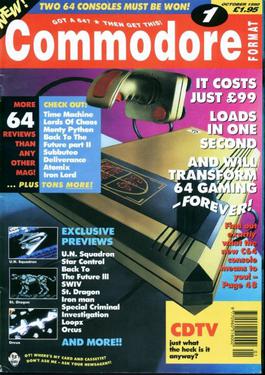
Commodore Format was a British magazine for users of the Commodore 64 home computer. It was published on the third Thursday of every month. All 61 issues were produced by Future plc. These came towards the end of the machine's commercial life - from October 1990 until October 1995.
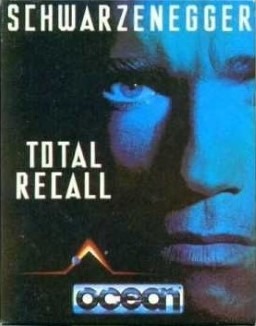
Total Recall is a 1990 platform game developed and published by Ocean Software that was released for the Commodore 64, Amiga, Amstrad CPC, ZX Spectrum, Atari ST, and Nintendo Entertainment System. Total Recall is based on the 1990 film of the same name.

Fun School is a series of educational packages developed and published in the United Kingdom by Europress Software, initially as Database Educational Software. The original Fun School titles were sold mostly by mail order via off-the-page adverts in the magazines owned by Database Publications. A decision was made to create a new set of programs, call the range Fun School 2, and package them more professionally so they could be sold in computer stores around the UK. Every game comes as a set of three versions, each version set to cater for a specific age range.

Leader Board is a series of golf simulation video games that was developed by Bruce Carver and Roger Carver, and published by Access Software.
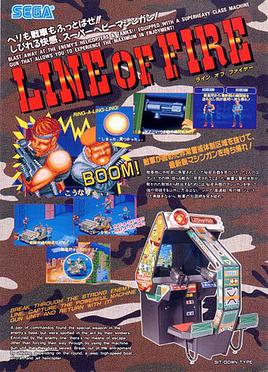
Line of Fire is a first-person light gun shooter game developed by Sega and released for arcades in 1989. It was released with two arcade cabinet versions, a standard upright and a sit-down cockpit, both featuring two positional guns. The cockpit design allows the player(s) to sit down while playing the game, while having two-handed machine guns, controlled by a potentiometer-controlled gun alignment software system. The game follows a two-man commando unit as they try to escape from a terrorist facility after seizing a prototype weapon.

Cloud Kingdoms is a puzzle game published by Millennium Interactive for the Amiga, Atari ST, Commodore 64, and MS-DOS in 1990. The player controls Terry, a green bouncing sphere, on a quest to recover his magic crystals that have been stolen by Baron von Bonsai. To do so, he must travel through the eponymous Cloud Kingdoms, avoiding enemies and hazards while collecting all of the crystals within the game's time limit. The game was developed by Dene Carter at Logotron, with sounds and music composed by David Whittaker.
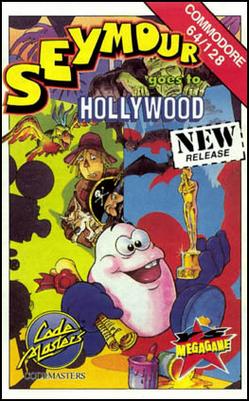
Seymour Goes to Hollywood, also known as Seymour at the Movies, is a platform and adventure game developed by Big Red Software and originally published in Europe by Codemasters in 1991. Players control Seymour, a small potato-like creature who wishes to be a film star. The film's script has been locked in a safe, meaning Seymour must solve puzzles by collecting and using objects scattered throughout the game in order to progress, ultimately retrieving the script and allowing filming to start.

P-47: The Phantom Fighter is a 1988 horizontally scrolling shooter arcade video game originally developed by NMK and published by Jaleco. Set during World War II, players control a Republic P-47 Thunderbolt fighter aircraft to face against the Nazis, who are occupying multiple countries around the world. Its gameplay involves destroying waves of enemies, picking up power-ups and new weapons, and destroying bosses. It ran on the Mega System 1 hardware.

Brutal Sports Football is a 1993 sports video game developed by Teque London and originally published by Millennium Interactive for the Amiga. It was re-published for MS-DOS and Amiga CD32, and later became the first third-party title published for the Atari Jaguar. The first entry in the Brutal Sports series, the game is a fictional style of football played against human or computer-controlled opponents. It features a different take on american football by emphasising the violent aspect of the sport.

Cover Girl Strip Poker, alternately titled Cover Girl Poker, is a 1991 erotic video game based upon five-card strip poker and originally developed and self-published by Emotional Pictures; it was released for the Amiga, DOS, Commodore 64, CDTV, and CD32. Cover Girl Strip Poker is the original Danish title; it was retitled Cover Girl Poker outside of Denmark in the rest of Europe, and the title was subsequently reverted to Cover Girl Strip Poker for the European CDTV and CD-ROM DOS releases. Emotional Pictures was a subsidiary of Danish company InterActive Vision A/S.

















